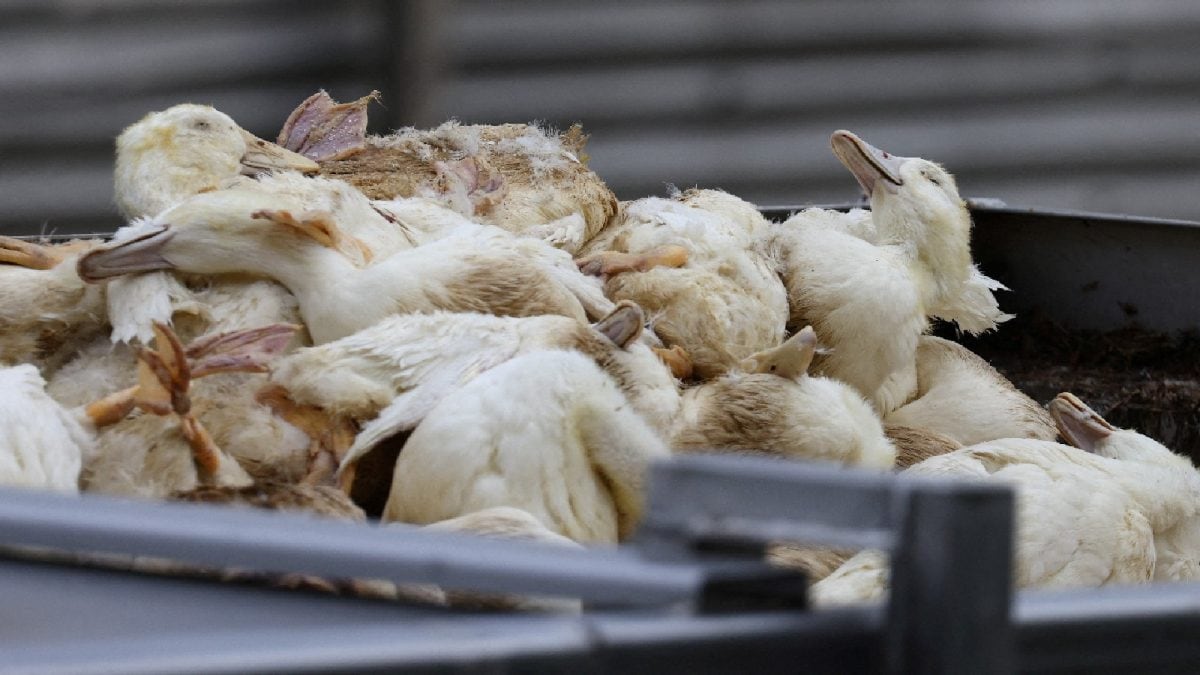Last Updated:November 16, 2025, 08:22 IST
The first known case of SARS emerged in November 2002, setting the stage for a virus closely related to Covid-19.

SARS’ origins highlight early warnings about animal-to-human virus transmission. (Representative Image)
Today, November 16, 2025, marks 23 years since a mysterious illness silently emerged in southern China, one that would shock the world. It started with a single patient falling ill with a strange pneumonia, unknowingly setting off a chain of events that the world would not notice for months.
This day marked the beginning of what would later be identified as SARS, the “older cousin" of COVID-19.
But how did it all begin, and why did the world remain unaware for months?
By January 2003, Chinese epidemiologists had identified two unusual pneumonia cases in Guangdong province, prompting early investigations. It soon became clear that the virus had been quietly spreading. First it infected food handlers, such as chefs and market vendors working in crowded wet markets, where live animals like poultry, civet cats, and raccoon dogs were kept in close quarters.
How SARS Spread Across Asia
The virus quietly spread among health care workers before reaching Hong Kong in February 2003. Its arrival there escalated when a nephrologist from southern China, attending a wedding on February 21, fell seriously ill and later died.
The World Health Organization (WHO) became involved in March 2003 when a doctor, investigating a case in a businessman who had travelled from Hong Kong to Hanoi, contracted the disease himself and died.
By March 12, WHO issued a global alert about a severe, unknown pneumonia affecting China, Hong Kong and Vietnam. The US Centers for Disease Control and Prevention (CDC) officially named it severe acute respiratory syndrome (SARS) on March 15, and by March 24, a novel coronavirus was confirmed as the cause.
Global Impact
At its height, the SARS outbreak affected more than 8,000 people in 28 countries, and caused 774 deaths. Its case-fatality rate was estimated at 9.6%.
A brief resurgence in early 2004 was contained quickly through aggressive contact tracing and quarantine measures, which also allowed scientists to trace the virus to palm civets and raccoon dogs sold at markets. Later, horseshoe bats were proposed as the original host, and in 2017, researchers discovered SARS-like viruses in bats living just a mile from villages in Yunnan province, China.
Did SARS Affect India?
Here’s what you need to know about SARS impact in India:
• The outbreak did affect India, but only minimally.
• India reported three confirmed SARS cases during the outbreak.
• There were no deaths recorded from SARS in India.
• The cases were likely linked to travel, as the disease primarily spread through close contact with infected individuals or travelers from affected regions.
Overall, the impact of SARS in India was limited compared to the major affected countries like China, Hong Kong, Taiwan, and Canada.
Lessons For COVID-19
SARS served as a kind of “dress rehearsal" for the Covid-19 pandemic. Both viruses belong to the same coronavirus family and likely emerged from similar animal hosts.
After SARS, China improved its disease surveillance system, implementing contact-tracing and lab-reporting mechanisms. These measures proved vital when SARS-CoV-2 appeared in late 2019. Unlike SARS, which took months to identify, Covid-19’s virus was detected in under two weeks, and vaccines were in clinical trials by March 2020.
But some lessons were only partially learned.
Live Science reported that in 2017, Dr Kwok-Yung Yuen, who co-discovered SARS, told Nature News that human interference with wildlife habitats and the sale of wild animals in markets should be avoided, as respecting nature is key to preventing new infectious diseases.
Yet risky wildlife practices continued, highlighting the ongoing threat of future outbreaks.
Why SARS Was Containable
SARS, while deadly, was easier to contain than Covid-19 because it was most infectious during the second week of illness, when patients were already seriously ill. Covid-19, in contrast, spreads easily in early stages, sometimes before symptoms appear, making containment far more challenging.
SARS’s legacy lies in the public health infrastructure it prompted and the warning it provided about animal-to-human virus transmission. These lessons continue to influence global disease preparedness even today.
A team of writers at News18.com bring you stories on what’s creating the buzz on the Internet while exploring science, cricket, tech, gender, Bollywood, and culture.
A team of writers at News18.com bring you stories on what’s creating the buzz on the Internet while exploring science, cricket, tech, gender, Bollywood, and culture.
Location :
Delhi, India, India
First Published:
November 16, 2025, 08:00 IST
News viral 23 Yrs Before Covid, Its 'Older Cousin', SARS, Shook World On This Date — How Many Indians Lost Lives?
Disclaimer: Comments reflect users’ views, not News18’s. Please keep discussions respectful and constructive. Abusive, defamatory, or illegal comments will be removed. News18 may disable any comment at its discretion. By posting, you agree to our Terms of Use and Privacy Policy.
Read More

 3 hours ago
3 hours ago


















